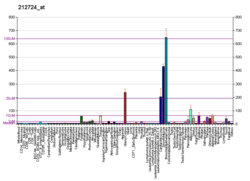Regulation
Most Rho family members cycle between an inactive GDP-bound form and an active GTP-bound form. However, members of the Rnd subgroup of the Rho family are exceptions to this, binding detectably only to GTP, while having low GTPase activity, if any. [7] Instead, Rnd family proteins are regulated through other mechanisms that control their production, degradation, phosphorylation, and localization. [8]
This page is based on this
Wikipedia article Text is available under the
CC BY-SA 4.0 license; additional terms may apply.
Images, videos and audio are available under their respective licenses.







